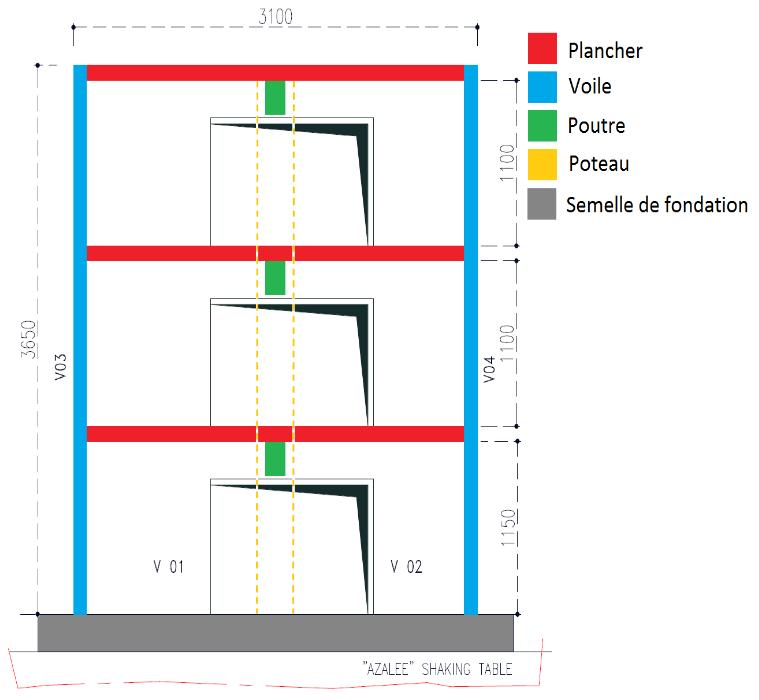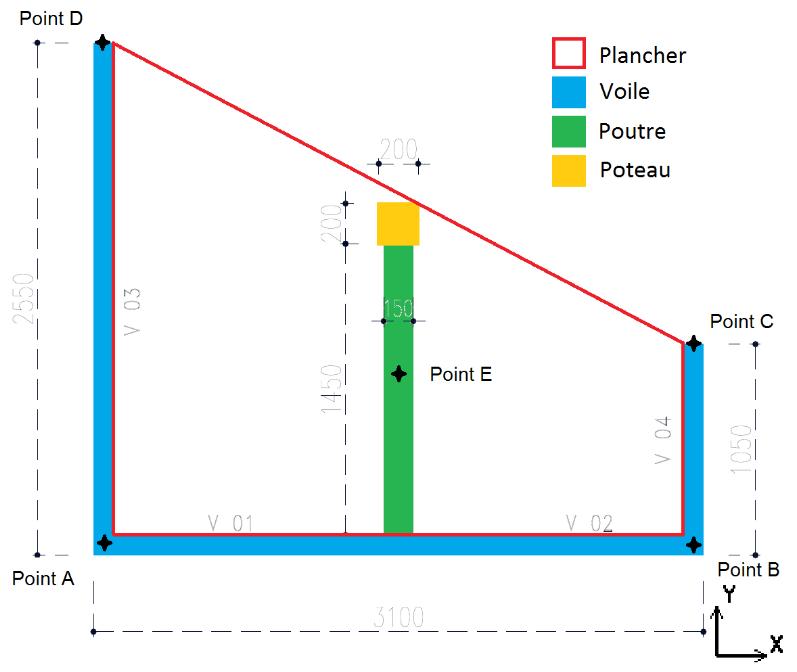1. Reference problem#
1.1. Geometry#
The model models, on a scale of 1/4, the half of a typical building of a nuclear installation. It consists of three walls V01/02 V03 and V04 placed in a U shape as well as three trapezoidal floors. Openings are pierced in the V01/02 and V03 sails. Each floor is supported by a horizontal beam as well as by a vertical post. The model is asymmetrical in order to promote twisting movements. The geometric characteristics of the model are shown on the and on the.

Figure 1.1-1: Dimensions of the Smart 2013 model
(Elevation view — Dimensions in mm)

Figure 1.1-2: Dimensions of the Smart 2013 model
(Plan view — Dimensions in mm)
1.2. Material properties#
The material is isotropic elastic with the following properties:
\(E=30000\mathit{MPa}\)
\(\mathrm{\nu }=0.3\)
\(\mathrm{\rho }=2500\mathit{kg}/m\mathrm{³}\)
1.3. Boundary conditions and loads#
The boundary conditions are embeds at the base of the model (including the pole). When making a comparison between different models, you just need to make sure that these boundary conditions are equal in all models. For this reason, the representation of the vibrating table is not necessary and the model can be simplified by embedding it under the foundation sole.
1.4. Initial conditions#
Nil.